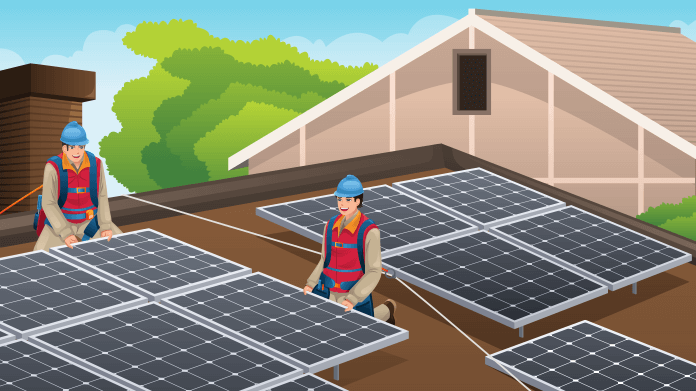CM Solar
How to Own a Solar Roof?


Introduction: The future is indeed bright for solar power
A brief overview of solar power across the globe
By the end of 2018, global cumulative installed solar photovoltaic (PV) capacity reached about 512 gigawatts (GW), and global PV installations for the year 2019 reached about 121 GW. These are massive figures by any standard, and the numbers only continue to rise exponentially every year. Here, countries like China, the U.S., and India continue to lead the pack, as they deploy systems to generate solar power, not just for residential and commercial buildings, but also for widespread solar farms, using distributed solar photovoltaic (PV) technology. These are large enough to power state-wide landscapes.
For the future, experts proclaim that these impressive numbers will more than double over the next four years, to a whopping 700+ gigawatts of solar power, as more countries commit to making the most of clean, renewable sources of energy. In fact, they even predict that solar PV and wind power will account for 70% of the total global power expansion projected over the next five years, with a large chunk coming from distributed solar PV.
Solar power in the U.S.: Why YOU should consider a solar power roof?
The scenario is even more upbeat in the United States, as generation of solar power continues to enjoy incentives, sponsored by both the federal government and various state governments. Coupled with lowering solar roof installation costs, both residential property owners and commercial business owners are increasingly tempted to switch to solar power for their basic energy requirements. The solar Investment Tax Credit (ITC) first introduced in 2006, and Renewable Energy Certificate (REC) goals of individual U.S. States, are particularly noteworthy in this regard.
Here is a quick summary of how solar power deployment has transformed in the U.S. in the past few years.
Installations to generate solar power have consistently seen an annual growth of over 50% since 2006.
Costs continue to decline at a rapid pace, with a 70% reduction over the past decade.
An increasing number of states are re-iterating their commitment to renewable sources of energy, with solid goals like generating 80%–100% of energy by 2040–2050. Here, solar continues to be the leader in renewable energy sources.
The solar boom is not just about energy.
Almost 250,000 Americans are employed in the solar industry. That is a significant percentage of the U.S. workforce.
In 2018—the best year yet for solar energy deployments in the U.S., the industry boosted the U.S. economy with a whopping 17 billion dollars worth investment.
In summary, the industry expects to see another surge of solar power deployments over the next 2 years. This is more so across residential buildings, as the federal government gently tapers off tax credits by 2022. But of course, this can only mean that state governments will then take on the sole responsibility of providing incentives, in order to keep their residents happy and aligned to solar power.
Note: If you live in the state of California, you may no longer have a choice about including solar energy to power your building. This year, California becomes the first U.S. state to mandate solar power as a source of energy. As per this, all new buildings under 3 stories tall will need to include a solar PV system to generate solar energy to power their building.
The mandate became effective as of 1st January 2020. Experts consider this a path-breaking development in the U.S. renewable energy landscape, as more states are soon expected to follow suit.
